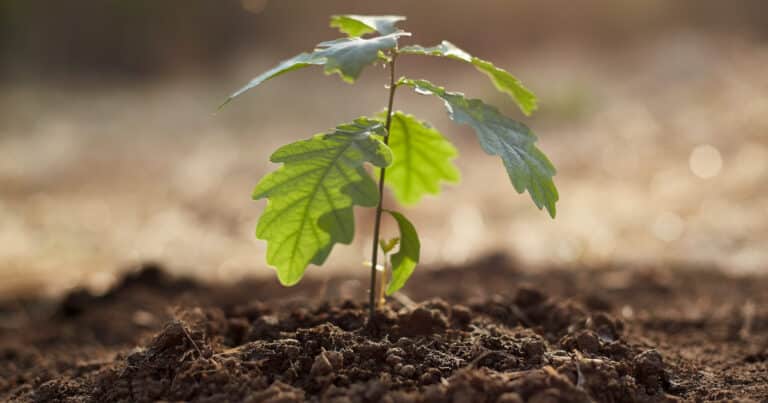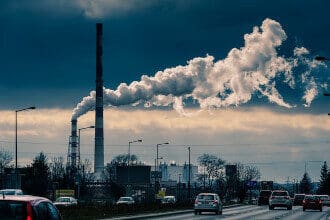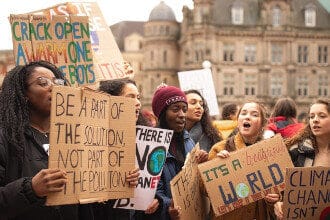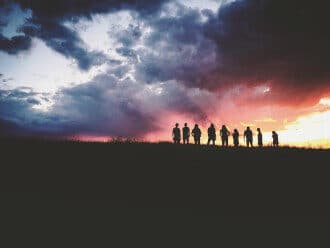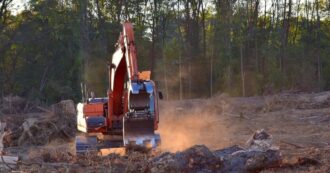By Ethel Mendius – Time and time again, we see environmental degradation has a disproportionate effect on vulnerable populations and in particular communities of color. Environmental justice issues require us to consider the influence of race, socioeconomic status and other factors in the choices we make to protect the natural world.Dr. Rolf Bouma
What Is Environmental Justice?
The U.S. Environmental Protection Agency defines environmental justice as “the fair treatment and meaningful involvement of all people” in policy surrounding the environment, asserting that “no one group should be disproportionately affected by negative environmental consequences due to current government policies.” Until this is the case, we feel the need for environmental justice.
Origins of the Environmental Justice Movement
On a national scale, the Environmental Justice (EJ) Movement has “broadened the scope of environment beyond conservation and preservation of natural resources.” The early efforts of environmental justice communities and the research done by the founders of the EJ movement have brought environmental racism to the forefront of climate justice.
Dr. Robert Bullard
In 1970s Houston, black residents challenged the construction of a solid-waste disposal site in their neighborhood. Sociologist Dr. Robert Bullard, regarded as the “father of environmental justice”, began collecting data and discovered that 14 of 17 of the industrial waste sites in Houston were situated near communities of color.
Bullard’s research concluded that systematically, “environmentally harmful infrastructure was more likely to end up in places where minority populations lived.” This work raised the issue of environmental racism and put pressure on local agencies to move the sites elsewhere.
Bullard continues to support “the principle that all people and communities have a right to equal protection and equal enforcement of environmental laws and regulations.” His early findings inspired the EJ movement that was to follow.
Reverend Benjamin Chavis
A few years later in 1982, black residents of Warren County, North Carolina, with the help of the NAACP, initiated a non-violent demonstration against the arranged disposal of toxic waste in their community. Reverend Benjamin Chavis, a civil rights activist, became involved firsthand in these protests.
While the Warren County residents were unable to stop the construction of the site, they did bring national attention to the environmental risks felt by minority groups. This act of community engagement has been called “the first major milestone in the national movement for environmental justice.”
Chavis remained deeply involved in environmental justice and commissioned a report in 1982 that confirmed that “race was the single most important factor in determining where toxic waste facilities were sited in the United States.” This sobering reality persists today.
Today’s Environmental Hazards
The environmental injustices highlighted by Bullard and Chavis have continued well into the 21st century alongside the broader social inequalities that cause them. Current environmental hazards disproportionately impact communities of color, demonstrating a need for environmental protections of vulnerable populations.
Hazardous Waste Sites
The Center for Effective Government released a report on communities living “in the shadow of danger”, that is, in close proximity to hazardous waste sites. They found that people of color are almost twice as likely to live near these facilities than their white counterparts, and that hazardous waste sites situated in minority communities have almost twice the rate of incidents that directly lead to environmental health issues.
Furthermore, this report concludes that “increasing social inequality is linked to environmental degradation.” The environmental injustices faced by minority communities have a long-term impact on the wildlife and green spaces around them and increase the chances of water contamination, all of which jeopardize the well being of the planet at large.
Air Pollution
Many of the health hazards posed by these sites are the result of air pollution. A report found that hazardous waste disposal sites are not vetted for their long-term impact on human health before construction. Because of toxic air pollution, communities situated within three miles of a hazardous facility are at much higher risk for health problems such as cancer and respiratory illness.
Industrial facilities are only one source of air pollution. Living in high-traffic areas and near power plants and landfills also means a vast reduction in the local air quality, and “historical practices have led to the concentration of poor communities and communities of color in neighborhoods” closest to these health hazards.
These sources prevent local communities from living in a healthy environment by threatening them with “high levels of exposure to harmful pollutants such as nitrogen dioxide, ozone, and fine particulate matter” that pose a myriad of health risks. Environmental justice seeks to protect public health as well as the planet from the consequences of environmental pollution.
The COVID-19 Pandemic
The COVID-19 pandemic has had a devastating impact on those who are already victims of environmental injustice. Black and Latino minority groups “were almost three times more likely to be hospitalized and nearly twice as likely to die from COVID-19 as compared to their white counterparts.”
While there are many factors to be considered here, the science suggests air pollution prevalent in communities of color “plays a significant role in these disparities.” These statistics have provided the federal government another impetus to address environmental justice.
Air Quality standards
Recent events have shown us that “air pollution is the biggest threat to poor communities and communities of color” as exposure to pollutants leads to asthma attacks, hospitalizations, and deaths, all factors that are exacerbated by the ongoing effects of COVID-19. In light of this, proponents of environmental justice demand that the United States Environmental Protection Agency turn their attention toward National Ambient Air Quality Standards (NAAQS).
Once NAAQS is enforced more strictly, local government will be required to maintain safe levels of air pollution within all their communities. This change could offset the disproportionate exposure of vulnerable communities to unsafe air. Of course, these measures will be also effective at reducing the impact of air pollution on the planet.
Climate Change and Environmental Justice
As we reckon with the impact of climate change on our planet, it is also necessary to recognize that “fighting climate change and environmental justice are inextricably linked.” The environmental issues brought on by climate change are also matters of environmental injustice.
For example, the burning of fossil fuels releases carbon dioxide that degrades the atmosphere and causes temperatures to rise. Heatwaves decrease air quality, posing a greater threat to community health when air quality is already inadequate. Heat itself can be a deadly risk when suitable housing and air-conditioning is not readily available. All of these factors leave communities impacted by climate change extremely vulnerable.
Climate change is a preeminent issue in environmental injustice because it does harm to all but does not affect everybody equally. While the health risks of climate change are a concern in the U.S., they do even more damage on a global scale, where low income populations in the global south are particularly susceptible.
Research has found that children are uniquely vulnerable to the consequences of climate change, and that “the greatest burden falls on those who are socially and economically disadvantaged.” It is the responsibility of more privileged nations and peoples to address issues of environmental justice on a local level and beyond.
Current Attitudes
In 2022, we witness real change, thanks to the EJ movement. Government policies are beginning to reflect the urgency of environmental justice in light of climate change, COVID-19, and other factors.
The U.S. political climate is now more hospitable to environmental justice. The preservation of climate health has become a high priority for many Americans, and increased social awareness has brought attention to the social issues that precipitate climate injustice.
The current administration has responded to these needs and taken up the Justice40 initiative. These guidelines require that “40 percent of climate, energy and infrastructure spending go to overburdened and marginalized neighborhoods.”
While we have a long way to go in pursuing environmental justice, EJ activists are encouraged by these changes. As Dr. Robert Bullard observes, “[In] 1979, environmental justice was a footnote… Today it’s a headline.”
Religion and Environmental Justice
Drawing on faith communities and traditions can be a powerful way to fight for environmental justice issues, as explored in the article Environmental Justice and Religion. The importance of faith in the fight against climate change shouldn’t surprise us. People of faith have been fighting for justice for thousands of years from Abraham to Buddha, from Gandhi to Rev. Martin Luther King Jr.
Twin Crises: Climate & Racial Inequality
In our modern time as well, people of faith are standing up to fight for a healthy environment. Adelle M. Banks writes for Religion News Services about how Black interfaith leaders and environmental activists are working together to address what Former Vice President Al Gore calls the “twin crises of climate and racial justice.”
Ibrahim Abdul-Matin, a Muslim environmental activist, adds in the article “The transition to a cleaner future can also be a transition to a more just and equitable future… Instead of building up dirty fossil fuel infrastructure that drags down communities, we can harness sources like the wind and the sun to lift them up.”
With black Americans facing disproportionately high exposure to polluting fossil fuels like coal and oil, environmental justice is certainly an issue of race and an issue of faith. When we transition to cleaner energy sources we will all win, but if we continue with business as usual, some communities will lose more than others. May God help us to work together to achieve environmental justice, speedily in our days.
* Featured image source

